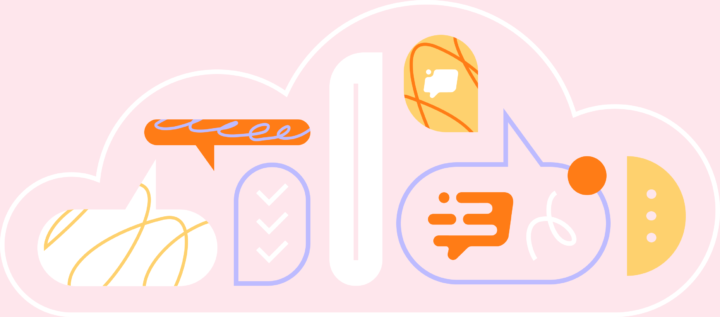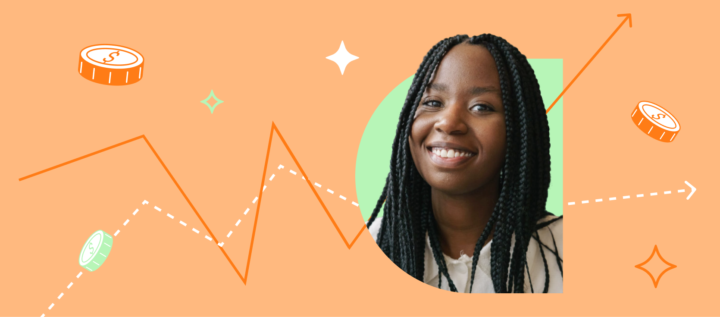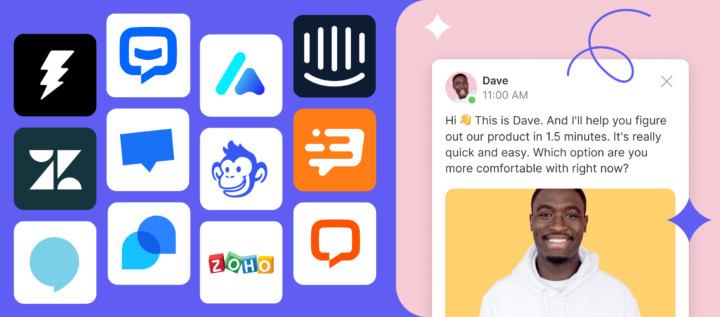10 customer segments examples to enhance your marketing strategy

Introduction
In the competitive landscape of modern marketing, understanding customer segmentation has become paramount for businesses aiming to optimize their strategies and drive success. By categorizing consumers into distinct groups based on shared characteristics, marketers can create tailored campaigns that resonate more deeply with their target audiences.
This article delves into the intricacies of customer segmentation, exploring its various types, real-life applications, and the significant benefits it offers.
With insights into effective methods and tools for implementation, readers will discover how harnessing the power of segmentation can enhance marketing efforts and ultimately lead to improved engagement and higher returns on investment.
Understanding customer segmentation: A key to effective marketing
Customer segmentation is not just a nice-to-have; it’s a must-have. Think of it like a well-tuned engine. You can’t expect your business to run smoothly if you’re trying to cater to everyone at once. By breaking down your broad target market into specific groups of consumers with similar needs and priorities, you create a roadmap for your marketing efforts. This isn’t just theory — it’s how you get results.
When you understand your customer segments, you can allocate resources wisely. You focus on the most promising bases, and that’s where the magic happens. This targeted approach doesn’t just make your promotions more effective; it drives sales through the roof. Take Dashly, for example. Our automation tools can guide user down your funnel with in-time relevant messages without your involvement. This means marketing and sales teams can zero in on high-quality leads, leading to quicker response times and better SLA compliance. Businesses using Dashly are seeing email open rates soar to 50-60%, well above the market average. That’s the power of knowing your audience.
Before Dashly came into the picture, clients were stuck in a cycle of slow responses and missed opportunities. Low SLA compliance and wasted time on low-quality leads were the norm. They often overlooked high-budget clients simply because they were using personal emails. This was a recipe for poor sales performance, especially for premium packages. But once Dashly was implemented, things changed dramatically. With constant data tracking and triggered messages, they are now able to send targeted personalized offers based on user behavior and raise conversion rates of their funnel.
In the digital promotion arena, click-through rates are your north star. They tell you whether your email campaigns are hitting the mark. Recent stats reveal that:
- 61% of audio listeners pay attention to audio ads
- Only 19% of TV viewers engage with commercials
This stark contrast highlights the power of targeted marketing over traditional methods. Companies that leverage audience segmentation are better positioned to create consumer-focused promotional strategies. This ensures that their messages resonate deeply with the right customer segments, driving engagement.
The impact of these strategies on ROI is clear and growing. As we head into 2025, data-driven decision-making is becoming the norm. Machine learning algorithms, like K-means clustering, can sift through historical data to predict future behaviors and preferences. This isn’t just theory — it’s real-world application. It shows how segmentation works and how solutions like Dashly can elevate your marketing game. The bottom line? If you want to thrive in today’s market, you need to know your customers inside and out.

Real-life customer segment examples to boost your marketing strategy
Customer segments are the lifeblood of any business strategy. Take tech-savvy Millennials, for instance. They make up a hefty chunk of the market — 31% of them and 13% of Gen X are shopping online using the same devices. With over 2 billion monthly active users on Instagram, brands that tap into this demographic are wise to leverage digital marketing. Think social media and influencer partnerships. Look at Spotify; they’ve nailed it by creating personalized playlists and tailored recommendations. That’s how you forge a real connection with your audience.
In the food and beverage sector, health-conscious consumers are a growing segment. They’re all about organic and sustainable products. Brands like Whole Foods get it right by promoting authenticity and transparency. A recent survey by BOK Financial shows younger consumers feel more informed about managing their finances than past generations, and that’s reflected in their buying habits centered on health and wellness. The case study titled “Desire for Authenticity” reinforces this — Millennials want genuine interactions from brands and are quick to reject old-school advertising tactics.
Let’s talk luxury shoppers. High-end brands like Louis Vuitton know how to segment their market based on income and lifestyle. They provide exclusive experiences and luxury items that appeal to wealthy individuals seeking uniqueness and status. This isn’t just about selling products; it’s about building brand loyalty and reinforcing that coveted perception of exclusivity that luxury consumers crave.
Frequent Travelers are another key segment. Airlines and hotel chains are all over this with loyalty programs and personalized offers aimed at keeping clients coming back. Many companies tailor their services to meet the specific preferences of these travelers, ensuring their experiences are seamless and enjoyable. It’s about making them feel valued and understood.
Companies like QuickBooks have zeroed in on small business owners as a critical customer segment. They highlight ease of use, affordability, and tailored business solutions. This targeted approach addresses the unique challenges small businesses face and positions these companies as vital partners in their growth journey. It’s not just about selling software; it’s about being part of their success story.

Exploring Different Types of Customer Segmentation
In marketing, knowing your customer isn’t just helpful; it’s essential. If you want to hit the bullseye with your campaigns, you need to categorize your clients effectively. Here are some strategies that can sharpen your targeting efforts:
Demographic segmentation: This is the bread and butter of market segmentation. It breaks down your audience by age, gender, income, education, and a host of other factors. Think of it as your customer’s ID card. For instance, the fact that kids can’t even set up an Instagram account until they’re 13 — with parental supervision, no less — should steer your marketing tactics when you’re trying to reach younger users.
Psychographic segmentation: Now we’re diving deeper. This isn’t just about who your customers are; it’s about what makes them tick. Their lifestyles, values, interests, and personalities all come into play here. By tapping into psychographics, you can craft campaigns that resonate on an emotional level. And it’s not just a nice-to-have; 13% of promotional leaders say content strategy is their biggest hurdle. That’s a clear signal that mastering psychographics can give you a competitive edge.
Behavioral segmentation: This one’s all about action. It looks at how customers interact with your brand—what they buy, how often they engage, and their overall usage patterns. By understanding these behaviors, you can tailor your messages and offers to hit home. It’s like adjusting your pitch based on how your audience reacts.
Geographic segmentation: Finally, let’s not forget geography. This strategy segments your market based on location, allowing you to fine-tune your campaigns for specific regions. Understanding local preferences and cultural nuances can make or break your promotional efforts.
Marketers who grasp these customer segments are the ones who see results. In fact, 84% of marketers report positive outcomes from targeted PPC advertising campaigns. That’s a powerful statistic. Take a page from the playbook of successful brands: optimizing your PPC campaigns with personalized landing pages can lead to impressive returns. It’s all about efficient categorization. Get it right, and you’ll be well on your way to marketing success.

The benefits of customer segmentation in marketing
Customer segmentation is like having a roadmap in a dense forest. It guides marketers through the tangled paths of consumer preferences and behaviors, allowing them to navigate effectively. Here’s how it pays off:
Improved targeting: When you know what makes each customer tick, you can craft messages that hit home. It’s not just about sending out a blanket email; it’s about tailoring your approach to resonate with distinct groups. This focused targeting boosts engagement because you’re speaking directly to what matters to them.
Tailored promotional initiatives: Segmentation lets you design campaigns that align with the unique tastes and habits of your audience. When customers feel recognized and valued, their loyalty grows. A statistic from Basis Technologies drives this point home: ‘61% of audio listeners pay attention to audio ads.’ That’s the power of personalization—it’s more effective than traditional methods.
Dynamic and flexible segmentation: Think of detailed client profiles as your playbook. They allow you to pivot quickly in response to market changes and consumer demands. This agility keeps your marketing strategies fresh and relevant, ensuring you don’t get left behind.
Efficient resource allocation: Identifying high-potential segments is like finding gold nuggets in a river. It allows businesses to focus their resources where they’ll see the greatest returns. This strategic allocation optimizes your ROI, ensuring you’re not wasting effort on less promising areas.
Enhanced consumer insights: Customer segments are a treasure trove of insights. By analyzing behaviors and preferences, you can refine your strategies continuously. For instance, in PPC advertising, 84% of brands report positive outcomes. That’s a clear signal to adjust your tactics based on what works.
Statistical support for segmentation: The numbers don’t lie. Studies show personalized marketing significantly boosts engagement. For example, 61% of audio listeners are engaged with audio ads, compared to just 19% for TV ads. This data highlights how effective personalized strategies can be in capturing attention.
Real-world applications: Look at the partnership between SALESmanago and PrestaShop. They’re using segmentation to enhance client interactions in the European eCommerce space. This collaboration shows how strategic division can lead to better targeting and improved business outcomes.
In summary, customer segmentation isn’t just a nice-to-have; it’s a necessity for any marketer looking to thrive in today’s competitive landscape. Use it wisely, and you’ll see the benefits unfold.

Methods and tools for effective customer segmentation
To effectively categorize clients, marketers need to tap into a range of methods and tools that sharpen their understanding of client behavior and refine their marketing strategies.
First off, let’s talk about Data Analytics Platforms. Tools like Dashly and HubSpot are invaluable. HubSpot stands out as an all-in-one client platform and CRM that excels at list segmentation. It allows marketers to spot key trends and categorize their audiences efficiently. Dashly tracks user behavior on the website. Thi way you can segment the audience based on their behavior and send them relevant offers to increase your chance for conversion. A positive ROI is proof that a solid strategy can make a difference.
Then there are Client Relationship Management (CRM) Systems. Advanced platforms like Salesforce let businesses track client interactions with precision. By segmenting databases based on various criteria, these systems enhance client engagement. HubSpot’s CRM, for instance, helps create and categorize lists, automates email campaigns, and integrates with tools like Hotjar for deeper behavioral insights. This all enriches the categorization process.
Next up, we have Surveys and Feedback. Gathering input from clients through surveys is a goldmine for insights into preferences, needs, and behaviors. This qualitative data is crucial for tailoring marketing messages to specific customer segments. Direct interaction with clients allows businesses to adapt their offerings based on real-time feedback.
Don’t overlook Social Media Analytics. Platforms like Facebook and Instagram offer analytics tools that provide a window into audience demographics and engagement levels. Analyzing this data helps businesses make informed segmentation decisions that hit home with their target market. A case in point is DPG Media, which used A/B testing on digital subscription call-to-action placements. They saw a 6.6% increase in newspaper subscriptions and a 7% boost in revenue. That’s the kind of impact data-driven decisions can have.
These strategies highlight the importance of continuously monitoring customer behavior with advanced analytics tools. It’s critical for creating dynamic segments that can adapt to ever-changing market conditions. In the world of marketing, staying ahead means being ready to pivot based on what the data tells you.

Conclusion
Customer segmentation is an essential strategy that empowers marketers to effectively target and engage distinct consumer groups. By categorizing customers based on shared characteristics, businesses can tailor their marketing efforts, resulting in improved engagement and higher returns on investment. The article outlines various types of segmentation, including:
- Demographic
- Psychographic
- Behavioral
- Geographic
Each type offers unique insights that enhance marketing strategies.
Real-life examples demonstrate the practical application of these segmentation methods across different industries, from tech-savvy millennials to luxury shoppers. Additionally, the benefits of customer segmentation are clear:
- Improved targeting
- Personalized marketing
- Efficient resource allocation
- Enhanced customer insights
All contribute to a more effective marketing approach.
Implementing customer segmentation requires leveraging advanced tools and methods, such as data analytics platforms and CRM systems, to gather and analyze customer behavior. This data-driven approach not only facilitates dynamic marketing strategies but also ensures that businesses remain responsive to the evolving needs of their customers.
In summary, the strategic use of customer segmentation is vital for businesses seeking to thrive in a competitive marketplace. By understanding and addressing the specific needs of various consumer groups, marketers can create impactful campaigns that resonate with their audiences, ultimately driving success and growth.



![21 proven tools for your 2025 marketing tech stack [Recommended by market experts]](https://www.dashly.io/blog/wp-content/uploads/2022/08/martech-stack-999-720x317.png)




